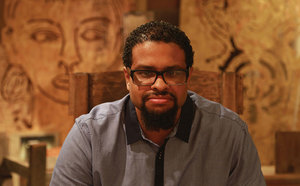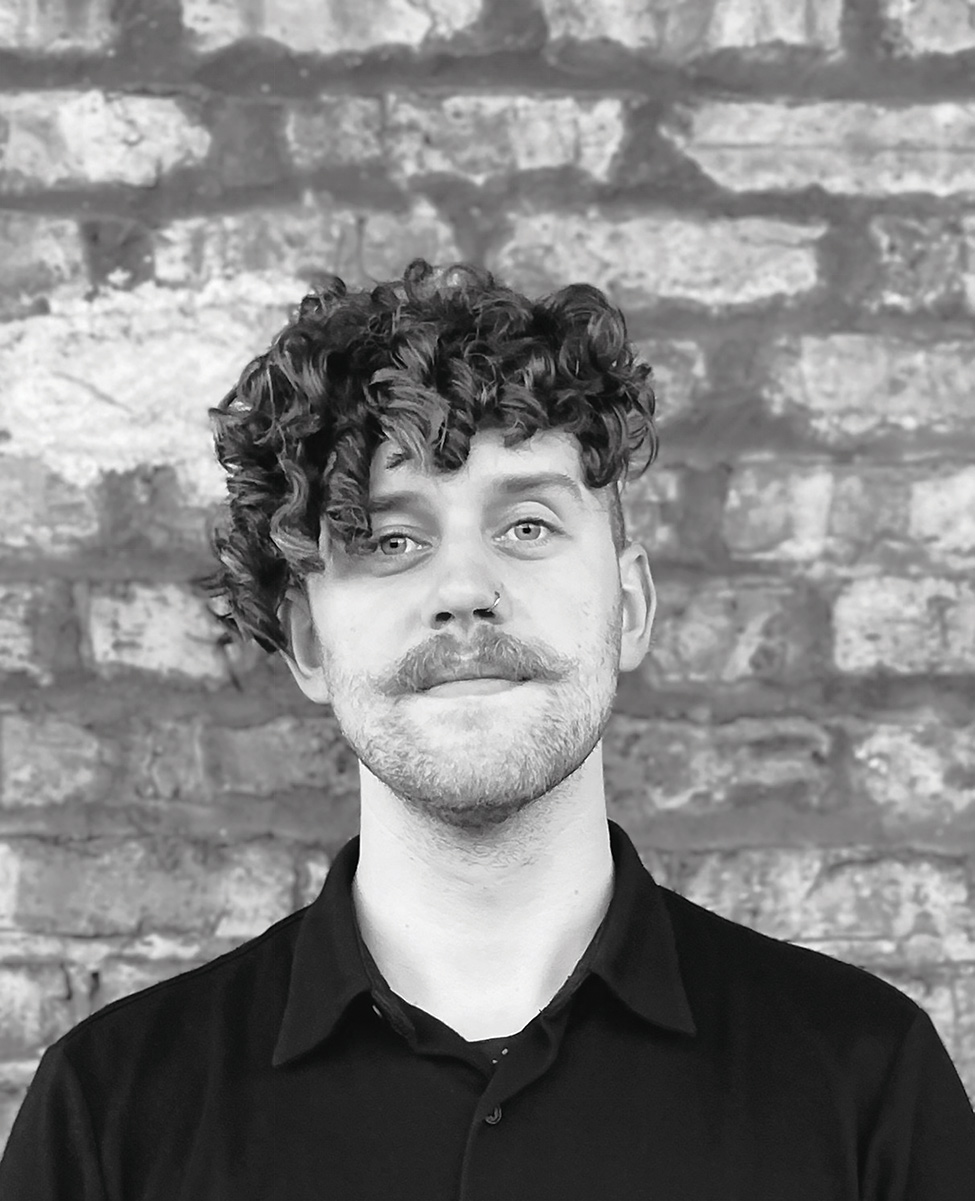Into the Neighborhoods: Faheem Majeed's Artistic Evolution


By ALISON REILLY
“I had a roll of duct tape, and I would make my G.I. Joe into 20 other types of G.I. Joes,” Faheem Majeed says. “I was always making but I didn’t understand that as an art practice. In high school, I had an art teacher who said, ‘You’re really creative.’ I’m like, ‘Nah, that’s not real. That’s not work.’ I always assumed that work had to be something that you didn’t enjoy. I didn’t understand that you could love your work. Art was not something I took seriously, but it was something I did all the time.”
Majeed, who grew up in Minneapolis, continued art classes throughout high school but ultimately had plans of becoming a veterinarian. It wasn’t until his art teacher took one of his paintings and sold it for $75 that he understood that something he loved could also support him.
“The spark for me was my art teacher,” he says. “And then my mother supported my impulse and understood the value of art production and making. She was very happy, because she saw I had a passion.”
Today Majeed’s practice extends well beyond a two-dimensional canvas. For each installation of his ongoing series, Planting and Maintaining a Perennial Garden, Majeed builds a room made of cedar planks that serves as a platform for other artists to meet, interact and perform. The walls, inspired by Margaret Burroughs Gallery at the South Side Community Art Center (SSCAC), pay tribute to the woman and community who supported him when he first moved to Chicago in 2003.

Majeed eventually became Executive Director of SSCAC and served the organization from 2005-2011. He speaks often of Margaret Burroughs, a co-founder of SSCAC (1940) and the founder of the DuSable Museum (1961), whom he befriended. “Margaret Burroughs was a teacher who was frustrated about the lack of diversity in the Chicago Public School art curriculum. She complained, and it fell on deaf ears, so she gathered a group of people who had objects, some were valuable and some not so much, but they all had a story. She assembled the objects in her home and invited the community, her kids and neighbors to come in,” Majeed explains. This collection in Burroughs’ home eventually became the DuSable Museum of African American History. “The community started calling it a museum, and she realized that there was a need.”
Tuning into the concerns of the local community now defines Majeed’s art practice. His work often acknowledges the dynamics of the space in which it exists and the changes that happen when the installation moves from one community to another. Around 2013 he built a shack in an empty lot on his street in Chicago’s South Shore neighborhood. When one of his neighbors asked him, “Why are you making this ugly shack in my neighborhood?” Majeed started to explain, “Hold on, I live here,” but the man interrupted and said, “Well, that’s not what I asked you.”
“This was a defining moment of understanding for me,” Majeed explains, “that when I build a shack in my neighborhood, it is connected to all the artists and the organizations in the city that support me. Those people are going to come to that shack but not necessarily to the neighborhood. When they visit, they might discover that area and see different types of potential, but that may or may not be of interest to the people who live in proximity to where I build.”
As he talked with his neighbor, Majeed not only recognized the effect of building a sculpture in his neighborhood, but also the perception of his body in space. “When I walk down the street as a black man, in a neighborhood that is predominantly black, I disappear. I realized that my art body is different than my physical body. I’m personally invisible in one way, but my art body sticks out because of what I draw in.”
The first shack that Majeed built became part of an ongoing series called Shacks and Shanties, in which he creates structures for both artists and organizations to utilize as a community and performance spaces. Because of the prevalence of empty lots across the city, Majeed wants to reimagine them as areas of potential.
Not blind to the controversy of his practice, in response to his own work as an artist engaged with local communities, Majeed started another series called My Socially Engaged Protest. “Basically, I protest my own art in the communities that I work in,” he says. “If I understand the problems of what it means to build a shack in a vacant lot in my neighborhood and what comes with that, then I can then ask, ‘What are the tools I can create to protest that action at the same time?’”

By protesting his own work, Majeed calls attention to the complex relationships artists can have with the communities they serve. While some in the neighborhood may welcome art installations, others might be hostile or simply uninterested. “The real work happens with the people on the fringes who don’t want to engage with what I’m doing, because they think they’ve seen this before,” Majeed says. “But that’s where the work should happen.”
Majeed’s self-awareness recently took the form of a 10-foot high inflatable balloon. Inspired by the fat cats and rats one might find at a union picketing strike, Majeed’s balloon is a Mario Brothers-like caricature of a black artist holding a palette in one hand and choking an adolescent with the other. “It’s hard to look at,” he admits. “It’s a complete, cartoony hot mess.”
But for Majeed, both the content and the form are significant. The balloon protests against “the role of artists as first wave gentrifying agents in under-resourced neighborhoods,” he explains. “And it’s mobile. I can have it up and running in five minutes, because it’s designed for people to put up and break down quickly for protests on the fly.”
This fall, for the first time, he will bring Planting and Maintaining a Perennial Garden to a commercial space. Supported by the Chicago Community Trust, Majeed will install a new iteration of his cedar gallery in a booth at EXPO CHICAGO. He has invited four local organizations and previous grantees of the Chicago Community Trust, including SkyART, Project Onward, Hyde Park Jazz Festival and Gwendolyn Brooks Centennial Celebration, to activate the space.
For Majeed, who identifies both as an artist and an arts administrator, it is essential to bring local artists from organizations like SkyART and Project Onward into dialogue with EXPO. “It’s really thinking about leveling value and saying, ‘Yes, you have this space, and there’s this type of monetary value but there’s also another type of value.’ When these groups respectfully meet each other then they can see how their relationship can be mutually beneficial.”
Along with his own work, Majeed is one of the founders of the Floating Museum, which operates without a permanent physical space. This summer, the Museum took on the literal embodiment of its name and organized an expansive project to float an industrial barge from southeast Chicago to the new Riverwalk in downtown Chicago. The barge, which is now installed at Navy Pier, serves as a mobile gallery for an impressive roster of cultural institutions, community organizations and artists including Maria Gaspar, Pope.L, Edra Soto, Cauleen Smith and Amanda Williams.
“It’s just a different way of thinking about a networked museum,” Majeed says. “We’re making the city into a museum, and its neighborhoods are the galleries. Its partners are museums and community organizations. The Floating Museum is the city of Chicago.”

Top image: Artist Faheem Majeed in his studio in Chicago. Photo: Devin Mays
Publisher's note: The Fall 2017 print version of this interview misspelled Margaret Burroughs's name as Burrows
SaveSave






